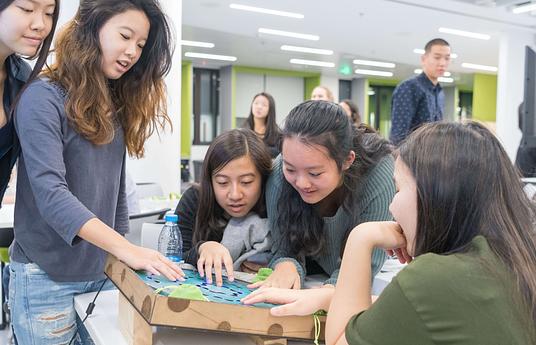Our participation in Parents as Allies was actually inspired by one of our parents, a proud immigrant herself, who encouraged our school's involvement. The timing was perfect and just the prompt we needed given the changing demographics in the area surrounding our elementary school. There were countless benefits to be gained for the school and for the incoming families.
Our event, Dinner & Dialogues, had the look of a banquet. We wanted to have as much food at the event as there were cultures represented at our school. A parent noted, “It looked like a celebration,” and it was, a Diwali (Indian) celebration. We enjoyed the experience of eating together - kids, parents, teachers and staff and the music teacher taught us a fun dance from India.
After the meal, the high school ESL students helped by taking the children to the gym to play. That allowed precious time for the adults in the cafeteria to talk with and enjoy each other's company.
After, an activity we call "bullseye" asked parents: How effectively is the school communicating with your family? The parents reported lots of communication with the ESL teacher but not with other teachers. They wanted to learn more than how their child was doing academically: Were they saying anything, in any language? Were they smiling? Making friends? All told, It was a great night for learning.
Other innovations are creating the occasions for parents to become better acquainted with our culture. They have shared that acquainting them with American customs, like play dates and the rules of sports, are other ways we can help increase their comfort. On Valentine's Day we had a party featuring desserts from around the world, and resources requested by parents. Valentine's is celebrated beyond the U.S., but they want to know how it's done here. Bigger yet, was their recommendation for an English language course. Through a partnership we were able to hold the classes at school at a minimal cost ($20) to parents.
The school principal advises, "Get voices at the table any way you can, especially those of the ESL families, to understand the needs. Then, design along the way. We knew what we wanted to accomplish in the big picture but there were a lot of other things we accomplished that we didn’t expect." Listening and trial - that's how it becomes an amazing learning journey.




